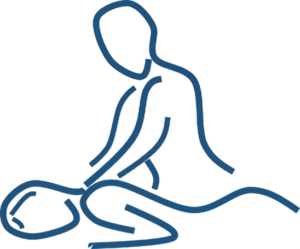Frequently Asked Questions

Osteopathy is a natural science based on the principles that all parts of the body function together as a whole. If one part of the body is restricted, then the rest of the body must adapt and compensate for this, eventually leading to pain, inflammation, injury or disease. What sets osteopathy apart from other disciplines is that it treats the underlying cause of a condition, and not just simply the symptoms.
Everyone can benefit from osteopathic evaluation and treatment. Osteopathy employs a holistic (whole body) approach to treatment. It is a non-invasive, drug-free alternative to help patients restore the circulatory, nervous and lymphatic system function, find relief from pain, achieve balance in the body, and improve the overall health.
Osteopathy is suitable for people of all ages and activity levels. Specific conditions that osteopathy has been shown to be of benefit include chronic pain, muscle spasms, sports-related injuries, migraines, circulatory problems, indigestion, prenatal and postnatal conditions, hypertension, respiratory issues, fibromyalgia, colic in newborns, and many more.
The effectiveness of osteopathic manual treatment relies on restoration and stabilization of proper mechanics, posture, and neurophysiological balance – emphasizing co-ordination and integration of various parts, regions, and systems of the body. (That means treatment helps just about everything)
While all three disciplines treat similar conditions, chiropractic and physio treatments are focused on a smaller area of the body. Osteopathy employs a holistic (whole body) approach with a focus on freeing the path of communications and integration between the different structures and systems of the body that allow the body to heal. Apart from manipulation, osteopaths use other techniques such as stretching, pressure and mobilization. Manual Osteopaths are also trained in cranial osteopathy or cranio sacral therapy, which involve very subtle and gentle adjustments without any “clicking” of the joints. These techniques are seldom used by chiropractors.
Although some patients are referred by their doctor, or another health care professional, this is not required, and you can make an appointment directly with your Osteopathic Manual Therapist.
Manual osteopathy is widely recognized as one of the safest drug-free, non-invasive therapies available for the treatment of neuromusculoskeletal and joints complaints. Although manual osteopathy has an excellent safety record, no health treatment is completely free of potential adverse effects. The risks associated with manual osteopathy, however, are very small. Many patients feel immediate relief following manual osteopathy treatment, but some may experience mild soreness or aching, just as they do after some forms of exercise or massage. Current literature shows that minor discomfort or soreness following soft tissue therapy typically fades within 24 hours.
Osteopathic treatment is extremely gentle. Practitioners respect the response of the body during treatment. One usually feels better after an osteopathic treatment although this may occur two to three days afterward. It is possible to feel a bit achy or sore initially. This can be caused by positive changes taking place in the body. For example, an area of the body that was not moving well initially may experience different sensations caused by improved circulation and nerve supply when better mobility is restored. Rest and hydrotherapy such as an epsom salt bath, and/or a short ice application will usually alleviate any discomfort.
If you have any x-rays, test results or relevant medical notes bring these with you. If you can’t easily remember all the medications or supplements you are on, you should also bring these along. As well, be sure to wear loose and comfortable clothing.
At your first consultation with an osteopathic practitioner a complete health history will be taken and the reason for your visit discussed. An assessment and observation of posture and movement will be done to assess the balance, structure and stability of the body. Orthopaedic tests may also be done to identify joint restrictions as well as soft tissue palpation to assess fascial and organ mobility
Findings from the examination and a subsequent treatment plan are then discussed. Treatment follows in the time available, and techniques are performed mostly in sitting or lying positions. A short assessment occurs at the beginning of subsequent treatments to identify areas which still need to be addressed.
The goal of treatment is to help relieve pain, improve mobility and restore balance and find the health. Treatments usually consist of hands on gentle manipulation, stretching and movements to find and treat the root causes of disease or discomfort you are experiencing.
Each person is different depending on how long they have had their condition, what sort of lifestyle they lead, and their state of health. We usually recommend three treatments, spaced one to two weeks apart. Some people with less serious conditions may feel better right away. Other people with more difficult or chronic conditions will likely require further treatments to function well. You are reassessed at every visit and your treatment plan is tailored to meet your individual needs.
Group health insurance (extended health) benefits, which are paid by private health insurance companies, often include the services provided by Osteopathic Manual Practitioners. Please contact your benefits administrator for information about your group plan, benefits and limitations with respect to coverage for the services of an Osteopathic Manual Practitioner.
